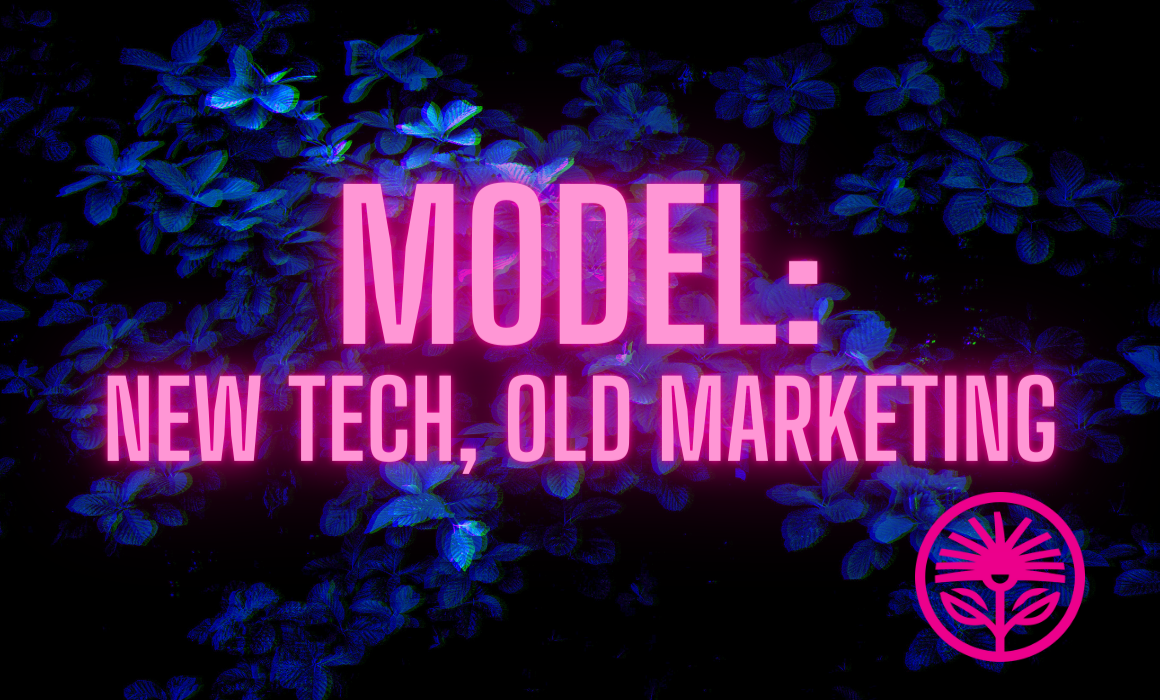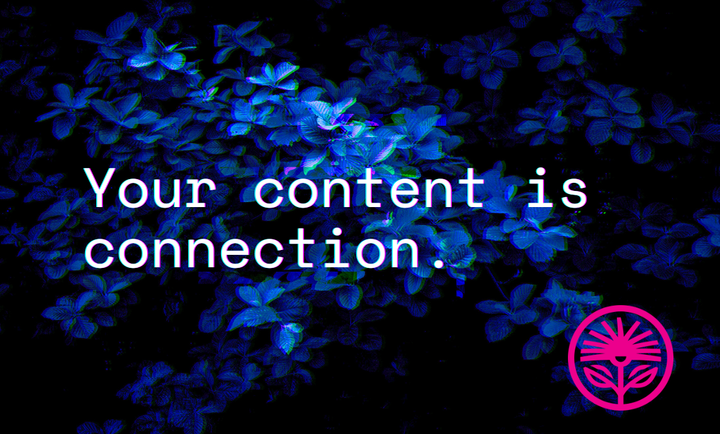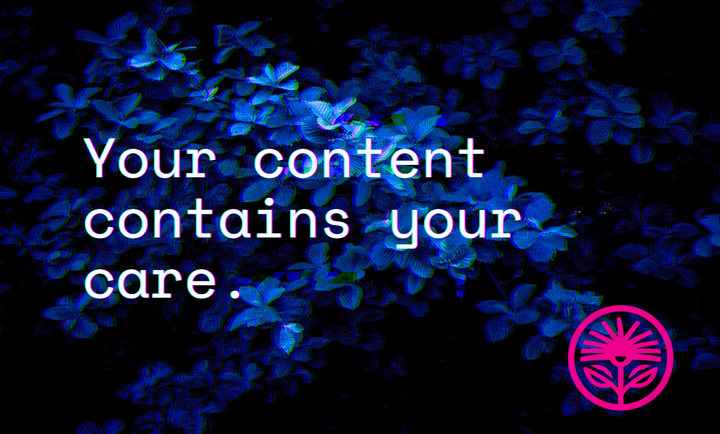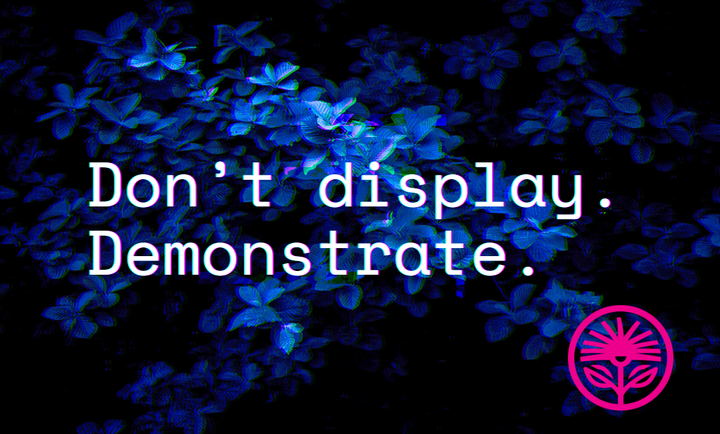Model: New tech, old marketing
A marketer’s approach to new tech like AI.

The Concept, Quickly
- When new trends or tools (like GPT) hit the market, the opposite of the trend is the likelier opportunity than following the (lost) crowd
- We can best use new tools by removing old constraints that kept us from differentiating ourselves
- We can apply old, evergreen concepts to new tools and trends to separate ourselves from the pack—instead of blending in
What’s Done is Done
The advent of AI is a massive opportunity for marketers for the same reason it’s an existential threat:
It makes making marketing content—like newsletters, blog posts, video and podcast scripts, and SEO filler—free and immediate.
The old constraint to marketing content was time. No matter how good or fast a marketer was, it still took somewhere more than zero seconds to produce a newsletter or a blog post.
Which meant it took something more than zero dollars to make. So, to at least some small degree, it was scarce.
With AI, that’s no longer the case. Generic marketing content can be created instantaneously, for effectively no money at all.
But the answer isn’t to assume that marketing is now easy and free just because content is. That’s “if this, then that” thinking.
We need “if this, then that, and if that, then what?” thinking.
So, what happens when marketing content becomes free and immediate to produce?
We will get absolutely overwhelmed with it.
Our customers will be not be consuming content, they’ll be consumed by it. And they’ll fight it.
They’ll get more discerning—not by choice, but because they’ll have to.
They’ll want something that isn’t the same old junk they’re seeing everywhere.
They’ll want something—someone—they can trust.
There’s an idea, as popularized by Rory Sutherland in Alchemy, that water doesn’t taste like anything to us so that we can most notice the other things in it—like helpful calories or dangerous pollutants. Humans are tuned to notice differences, not similarities. Similar things we package up into categories we can confine or ignore.
And content—well, that’s about to get a lot more similar in its abundance. The hard part is no longer producing content—the pipes of the internet have burst and we’re soaking in it.
The hard part is getting noticed in that kind of environment.
And we can do that by being the valuable difference that people are desperate for.
Let’s go through a quick model for how to think about new technology, tools, or trends and how marketers and entrepreneurs can approach them without wandering into the crowd.
What’s New?
The first thing to think about is the new trend itself. Not what it does directly, but what it enables.
Like Marshall McLuhan wrote, “the ‘message’ of any medium or technology is the change of scale or pace or pattern that it introduces into human affairs.”
The message of GPT is not easy and fast marketing. No, it’s infinite, immediate content.
The message is that the value of generic tips and tricks, how-tos, and traditional content has dropped—or, at least, is rapidly dropping—to zero.
So, then we have to ask: How would the opposite of the trend present us with a new opportunity?
The trend is toward producing more, more, more—faster, faster, faster. Every day I see entrepreneurs launch new blogs, newsletters, or long-form content series that they clearly didn’t write, GPT did.
And here’s the thing: at first, that’s good. Overall quality goes up, because GPT is better than the current average.
But as GPT becomes the floor, its output becomes the new standard, and the benefits of using it turn into table stakes—just another cost of doing business.
Which means, the opportunity is not following the crowd. It’s in producing things GPT can’t.
What’s Old?
The first thing to consider here are the old constraints we used to be under, or thought we were. Maybe we thought we had to produce tips and tricks, how-tos, and generic filler content because everyone else was.
We don’t have to feel that way anymore, because that stuff is being shoved online at the speed of light, every single moment, by robotic parrots.
If it’s been written once, it’s now been written enough.
So you don’t have to do that stuff anymore. You’re free of the old constraint of producing content that looks anything like your competitors’.
If someone else has done it, it’s done.
So, finally, what’s the old wisdom? What holds true, no matter what and no matter when?
Standing out from the crowd—who happen to be lost. [Newsletter: Don’t follow the crowd, they’re lost]
When times are good, the stand-out gets to choose their clients by being selective, making tradeoffs, and adding extraordinary value. And when times are tough, the stand-out gets what clients remain by having the type of credibility that only uniquely valuable tradeoffs can achieve. [Daily Lab: Show them what you don’t do]
And that’s what you can do that GPT can’t. You can make decisions, tradeoffs, and combinations that have never been made or done before because you’ve never done it before.
I’m not saying you shouldn’t use these tools—I use GPT a lot, every single day. I just don’t let it write my content for me, because my content is directly connected to my value—it’s a demonstration of it.
And a GPT-written newsletter by an entrepreneur selling their professional services is a demonstration of something—just not expertise, or value.
(If you’re curious about ways you can use GPT to amplify or better demonstrate your unique value, let me know by replying to this email! I’d love to share some tips.)
New Tech, Old Marketing
The thing is, all of this was about GPT—but, also, none of it was. This applies to all new trends, tools, and techniques.
Don’t look at what everyone else is doing so that you can do that, too. Look at what they’re not doing because they’re all too busy copying each other.
Don’t assume that what’s old is out-dated—it might merely be timeless.
Take the new, apply the old, and do things your own way.
Let’s face it—GPT is a better mimic than you or I. If your marketing is modeled after someone else’s, GPT will do it better, faster, and cheaper than you or I ever could.
But the only person GPT can’t be better than you, is you.
So now’s the time to be it.
Learn how to apply the Marketing Rangefinder and connect with your ideal clients, wherever they might be.
Or, if you’re launching a new business, check out our Value Definer Workshop and make sure your business is positioned to attract your ideal clients based on your unique values and tradeoffs.
Learn more on the Kelford Inc. Events page.



